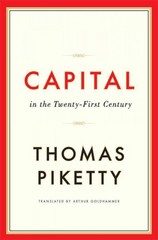please can you solve this
(a) Mark the initial equilibrium (i.e., as drawn) in the market graph with the letter A. Add any relevant information from the market equilibrium to the right graph, and mark the point that defines Rice Right's quantity supplied with the letter a. Fill in the Initial column with the equilibrium values of price p and market quantity Q and Rice Right's profit-maximizing quantity q; also indicate whether Rice Right's profit # is positive, negative, or zero. Economics 200 S2021: Prof. Lisa M. George Exercise 6: Costs & Competition Name: (b) The government starts subsidizing ethanol fuel, a rice-based substitute for gasoline. The program increases rice demand by 300 million tons per year. In the market graph, illustrate the new demand curve, and mark the new equilibrium point with the letter B. Also, illustrate Rice Right's profit-maximizing point with the letter b. Fill in the table's short run (SR) column. (c) At point b, Rice Right's profit is positive negative , so firms |enter exit rice farming. (d) In the intermediate run, entry or exit changes supply by 150 million tons per year. (You decide whether the change is an increase or a decrease.) Plot the new short-run supply curve in the intermediate run. Mark the intermediate-run equilibrium point with the letter C, carry the relevant equilibrium information over to Rice Right's graph, and mark Rice Right's profit-maximizing point in the intermediate run with the letter c. Fill in the table's intermediate run (IR) column. (e) The long-run equilibrium price is $ per ton. In the long-run equilibrium, enough firms enter rice farming to increase rice supply by tons per year (at each price). Draw the short-run supply curve in the long-run equilibrium. Mark the long-run equilibrium with the letter D, carry the relevant information over to Rice Right's graph, and mark Rice Right's profit maximizing point in the long run with the letter d. Fill in the table's long run (LR) column. (f) The government subsidy increases decreases doesn't affect the profit of rice farm- ers in the long run. Problem 6.7. The graph below replicates the market graph from Problem 6.6. ($/ton) Supply (a) Add your points A, B, C, and D to this graph. 400 350 (b) The graph includes the initial short-run supply curve. Draw and label the intermediate-run and 300 long-run supply curves. 250 (c) The intermediate-run supply of corn is 200 150 more less elastic than the short-run 100 supply, and the long-run supply of corn is Demand perfectly inelastic perfectly elastic unit elastic 100 200 300 500 600 700 Rice (mil. tons/year)







